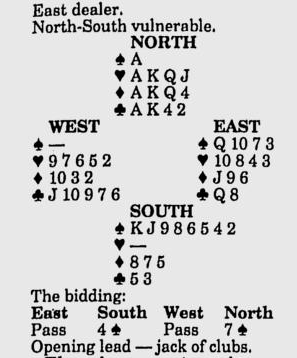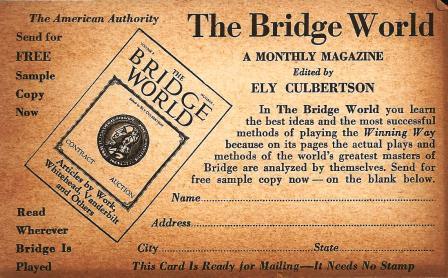The Hour – Dec 29, 1997

There’s approximately one chance in 500,000 of being dealt a hand containing 30 highcard points!!! And so any time you see one in a book or a bridge column, it is very likely that the hand was composed by somebody, and not actually dealt. That would certainly be true of this deal, which was published as a double-dummy problem in The Bridge World Magazine in 1930s to illustrate what was then called a quadruple trump grand coup.
Given East’s holding of the Q-10-7-3 of trumps, making seven spades would seem an impossible task. But of course the deed can be done, or we wouldn’t be publishing the hand. If you would like to test your problem-solving skills first, assume West leads a club and do not read past this point.
After taking the club king, declarer next leads a heart and trumps it, instead of doing what comes much more naturally, which is to cash the trump ace at trick two. Cashing the ace of trumps would inevitably prove fatal. If you don’t believe it, try playing the ace at once and see what eventually happens.
South next plays a diamond to the queen, ruffs a heart, then a diamond to the king, ruffs a heart, followed by a diamond to the ace and another heart ruff. This reduces declarer’s hand to five cards —a club and the K-J-9.8 of spades —while dummy now has the ace of trumps, a low diamond and the A-‘ 4-2 of clubs.
South then plays a club to the ace and returns a club forcing East to ruff as declarer in turn overruffs. Next comes the nine of trumps to the ace. followed by a diamond or a club. East’s last two cards, the Q-10 of spades, then succumb to the K-J to put a final touch or the extremely rare — and in this case contrived — quadruple trump grand coup.
